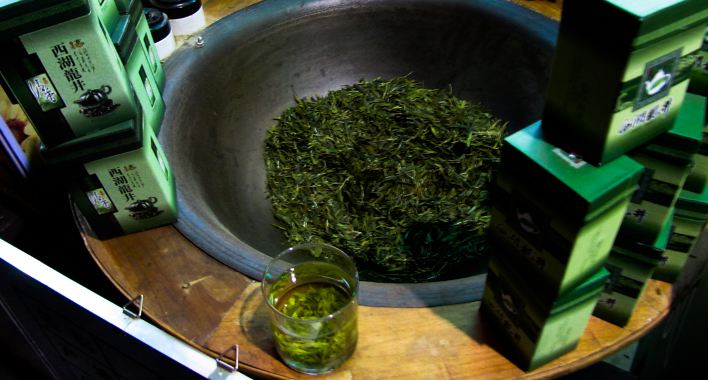
“Rather go without salt for three days than without tea for a single day,” Chinese Proverb.
I’m in love with Chinese tea. I drink it every day and every time I come back to Europe I bring some nice tea packages to my family and friends. Most importantly, I buy a ton of tea for myself.
My favorite Chinese tea is the Long Jing, the green tea produced close to the West Lake of Hangzhou. I also like flower tea and Pu’er, the fermented tea from Yunnan Province.
If you do a quick search on the internet you’ll find a lot of information about Chinese tea.
I decided to limit this first article about Chinese tea to two topics that I find interesting: the different classes of Chinese tea and the most famous tea brands of China (for each class of tea there are many different brands, for instance, you have the Long Jing green tea from Hangzhou, the Bi Luo Chun green tea from Tai Hu and so on).
The different classes of Chinese tea
Chinese Green Tea
Green tea is the most natural, within the Chinese teas. It’s dried as soon as it’s picked from the field and then fried. This process blocks the activity of the leaf enzymes that otherwise would alter the composition and the properties of the tea leaves.
Even if it’s much healthier than coffee and black tea, many people find it difficult to switch from these products, way more common in the West, to green tea, which has a very different taste.
In my opinion, it’s just a matter of habits and, once you make the switch, you will probably enjoy green tea much more than black coffee.
In China, you can find eight different green teas that are particularly popular domestically as well as internationally. Some of the teas include:
- Biluochun: The leaves are curled like snails and the tea is produced in the Jiangsu province
- Chun Mee: This tea is primarily famous outside of China and has a taste similar to plum
- Longjing: This tea is one of the most popular and originates from Hangzhou, the most famous city in the Zhejiang province
Chinese Oolong Tea
Oolong tea is semi-fermented (or semi-oxidized) and, in this sense, stands between green and black tea. The leaves of oolong tea are usually green in the middle and become red at the edge. The change in the leaves’ color is caused by the fact that this tea is fried, rolled, and roasted.
Even if its taste is pretty mild, you shouldn’t drink too much oolong tea because it’s stronger than it seems!
Oolong tea is said to bring brain, bone, heart, and dental benefits if consumed regularly. The production can mainly be found in two Chinese regions: Anxi County and the Wuyi Mountains, both have produced oolong tea for a long time.
Oolong tea is often characterized by its ball-shaped or crumbled shapes when dried. By contrast, many other green teas don’t have this shape.
Chinese Black Tea
Black tea, which is called “Red tea” in China, is dried, oxidized and then roasted. It’s more oxidized than white, green and oolong teas. It has a stronger flavor and, generally speaking, contains more caffeine than any other class of tea.
While green tea loses its flavor within a year, the flavor of the black tea can last several years. This is the main reason for which it has been traded to Europe since centuries.
It’s said that drinking black tea might bring benefits such as boosting heart health, lower bad cholesterol, lower blood sugar levels, reduce the risk of cancer, and more. While most teas seem to bring health benefits, you should also consider what tea you think tastes the best.
Chinese White Tea
White Chinese tea undergoes a similar process than green tea. Since it retains its anti-oxidation properties it’s considered one of the healthiest varieties of tea.
The white color comes from the hairs on the unopened buds of the tea plant. Even if the tradition of white tea production is very old, this variety is quite rare and in the past only the emperor and is crew could enjoy it.
White tea is proclaimed to protect teeth from bacteria, slow skin aging, reduce the risks of heart diseases, help with weight reduction, and it has a lot of antioxidants, for example. There are plenty of different white teas available such as White Peony, Silver Needle, Moonlight White, and more.
Chinese Yellow Tea
The process to obtain the yellow tea is similar to the one used for the green and the white tea. The difference lies on the fact that the tea leaves are let drying for a longer time so that they become yellow. It’s a slightly oxidized tea. According to some experts yellow tea may be more beneficial than green tea.
It’s said that yellow tea can improve mental health, reduce the risk of strokes, lower your cholesterol levels, strengthen your teeth and bones, and keep your arteries healthier. Referred to as Huang Cha in Chinese, the tea originates from various cities and provinces like Hunan, Anhui, Sichuan, Zhejiang, Hubei, and the Guizhou province.
Chinese Flower Tea
This variety of tea may be subdivided into flower and scented tea. Flower tea only involves dried flowers such as chrysanthemum, hibiscus, jasmine, lily and globe amaranth. Scented tea consists of a bundle of tea leaves wrapped around one or more dried flowers.
Flower teas often originate from the Yunnan province in the Southwestern parts of China. The outspoken benefits of drinking flower tea include relieving stress and anxiety, improved digestion, anti-aging, and better hair quality.
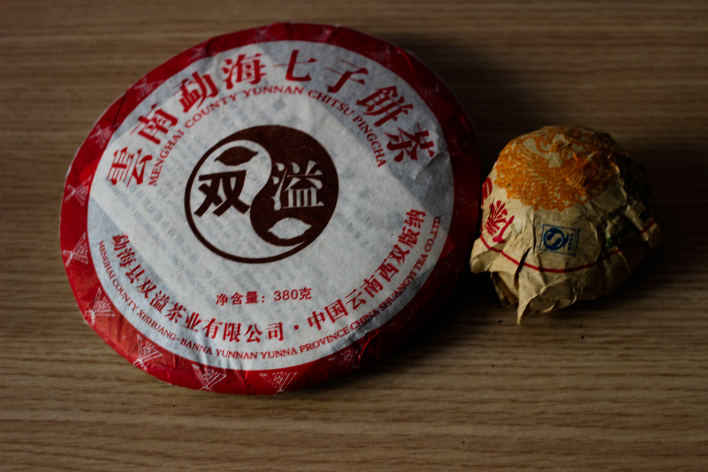 Pu’er Tea
Pu’er Tea
Pu’er Tea (also spelled as Pu-erh)
The Pu’er tea is a variety of oxidized and fermented tea produced in Yunnan province. The leaves undergoes fermentation after being dried and rolled. The Pu’er tea is pressed and sold in confections that remember a bun or a small cake.
This variety of tea should be stored at contact with the air so that the fermentation process can continue. As for good wine, the value of Pu’er tea goes up with the time.
Even if it’s often classified as a black tea, being so characteristic pu’er deserves a category on its own.
Note that the difference between “oxidation” and “fermentation” is that, while the oxidation is a spontaneous chemical reaction, the fermentation is catalyzed by microorganisms.
The 10 most famous Chinese tea
Long Jing
The Long Jing (龙井, it means Dragon Well) is a variety of pan-fried green tea from the Xi Hu (West Lake) district of Hangzhou, in Zhejiang Province. As I said, it’s my favorite tea.
Long Jing is commonly known to be of high quality and also has the Famous China Tea title. The tea includes everything from amino acids, vitamin C, and it has high levels of catechins. These affect how the tea tastes and the mouthfeel. Long Jing tea is comparably affordable and many people drink it daily.
Bi Luo Chun
The Bi Luo Chun (碧螺春, Spring Snail) is also a green tea and comes from Tai Hu, in Jiangsu Province.
Bi Luo Chun is another famous green tea and has been ranked as the number one tea among experts and has a long history in the country. The tea is divided into seven different quality classes, which is kind of self-explanatory of the popularity of the tea.
Tie Guan Yin
The Tie Guan Yin (铁观音, Iron Goddess) is an oolong tea from Anxi, in Fujian Province.
Tie Guan Yin originates from the 18th century and has many other names, including Ti Kuan Yin, Iron Guanyin, and Tiet Kwun Yum. Top Tie Guan Yin teas can fetch for some of the highest prices in the world. It was recently reported that 1 kg of fine Tie Guan Yin was sold for as much as USD 3,000 per kg, which is kind of amazing.
Mao Feng
The Mao Feng (毛峰, Fur Peak) is a green tea from Huang Shan, the Yellow Mountain in Anhui Province.
Mao Feng is one of the most famous tea types in China and qualifies for the China Famous Tea list. The tea has an aroma of fresh spring leaves, fruity notes, and has a high level of antioxidants.
Yin Zhen
The Yin Zhen (银针, Silver Needle) is a yellow tea from Jun Mountain, Dongting Lake, in Hunan Province.
Yin Zhen tea is the most expensive one among Chinese white teas as only the tops of the plants are used for the tea. China started to export tea in the late 1800s and the mother tree is planted in Hongxue Cave, Taimu Mountain.
Qi Men Hong Cha
The Qi Men Hong Cha (祁门红茶, Qimen Red Tea) is a black tea from Qimen County, in Anhui Province.
The tea is called Keemun tea in English and one of the most famous black teas from China. The tea is described as having a sweet aroma of honey and rose.
Da Hong Pao
The Da Hong Pao (大紅袍, Big Red Robe) is an oolong tea from Wiyi Mountain, at the border between Fujian and Jiangxi Province.
The tea is characterized by being filled in large and red containers with the characters for “Da Hong Pao”. According to BBC, Da Hong Pao is one of the most expensive teas, and in 2002 a Chinese person bought 20g for around USD 28,000.
Gua Pian
The Gua Pian (瓜片, Gua Pian) is a green tea from Lu’An, in Anhui Province.
It’s generally referred to as Lu’An Gua Pian which refers to melon seeds, as the leaves are shaped like melon seeds. The tea was first recorded in the famous text The Classic of Tea.
Bai Hao Yin Zhen
The Bai Hao Yin Zhen (白毫银针, White Fur Silver Needle) is a white tea from Fu Ding, in Fujian Province.
As mentioned above, this is the most expensive white tea in China. The tea is produced in three steps: 1. Picked by hand, 2. Syn-drying, 3. Dehydrating the tea. The last step is particularly difficult.
Pu-Erh
The Pu-erh (普洱, Pu’er Tea) is a post-fermented tea from the Simao County, in Yunnan Province.
Pu-Erh helps with digestion issues and relaxes your intestines, which is outspoken to be good for persons with stomach problems.
Where to buy Chinese tea
Finding quality Chinese tea for a reasonable price isn’t easy. After buying from several e-Commerces, I found that Teavivre is one of the best because it offers a large range of Chinese teas (including organic tea) that come directly from China, at a reasonable price.
Frequently asked questions
Other benefits of drinking green tea is that you can lose weight, get improved brain function, and reduce the risk of getting cancer. Not to forget, Chinese teas can prevent people from getting a number of other diseases, like Alzheimer and heart diseases.
- Black tea: 40 – 60 mg / cup
- White tea (e.g. Jasmine): 10 – 15 mg / cup
- Green tea: 23 – 35 mg / cup
- Oolong tea: 30 – 50 mg / cup
- Pu Erh tea: 30 – 40 mg / cup
By comparison, a cup of brewed coffee has around 150 mg of caffeine.
Photo Credits: Photos by Sapore di Cina
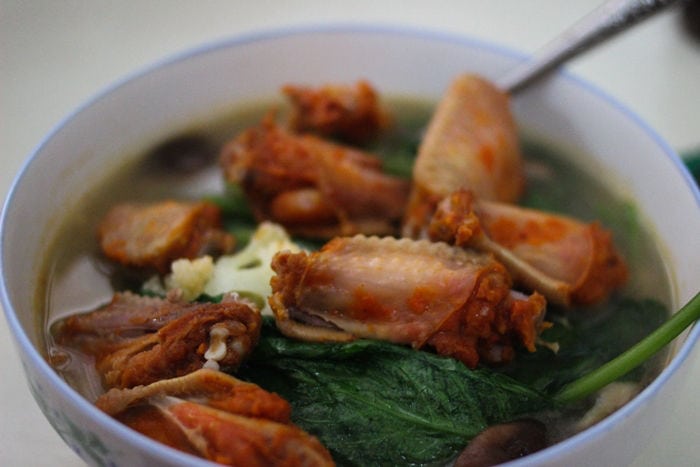
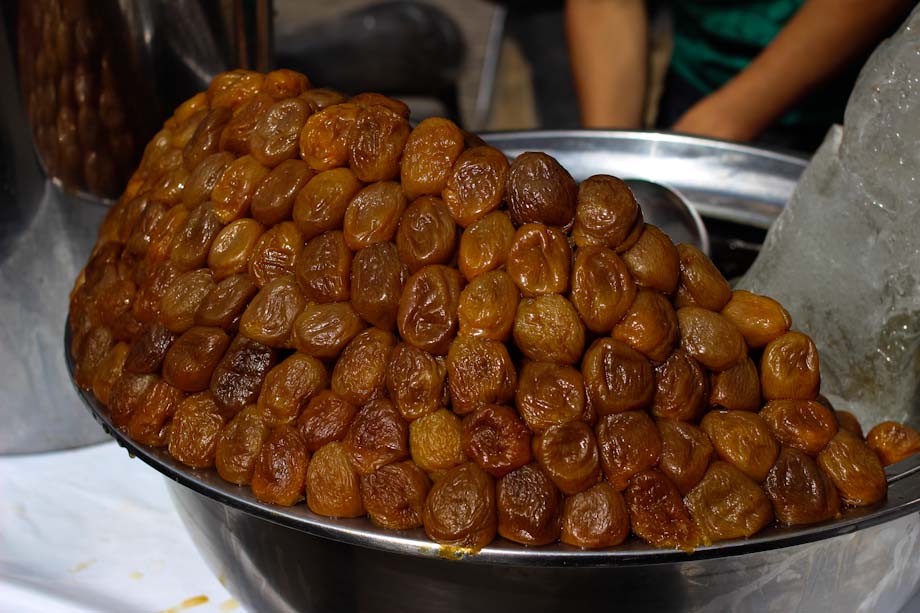
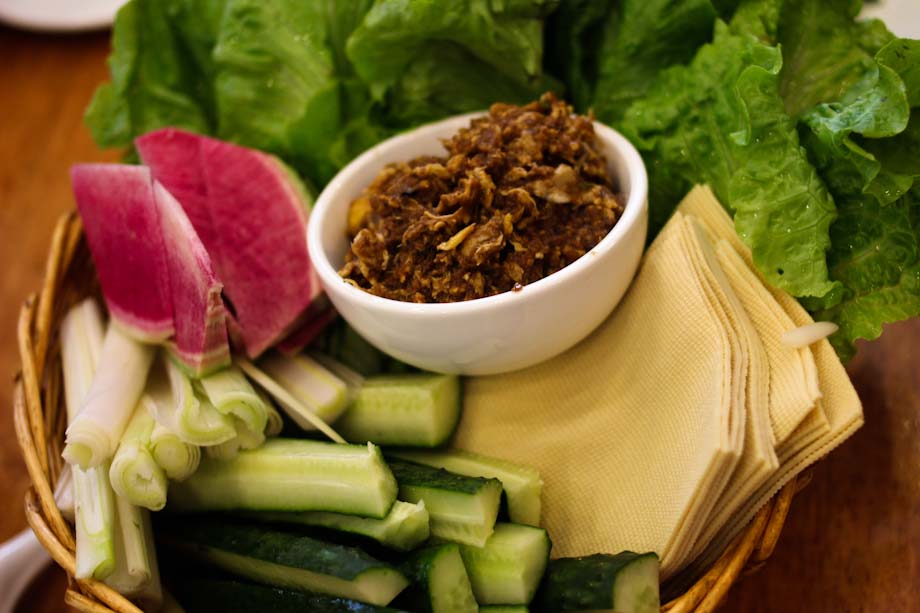

Excellent article!Make more people know about Chinese tea.
Please tell me what
#1) (MAN TING PAI tea is used for )
#2(LINGTOU SINGKE-BUSH TEA is used for )
#3) what teas are best for cancer .pkease
Both of them are Oolong Tea.
Green Tea is the one that they consider to have the highest amount of antioxidants so it might contribute to reduce the probability of having cancer (tea isn’t a cancer treatment).
Jun Mountain YinZhen is from a little island in Dongting Lake in Hunan Province, not Fujian
Thank you, I’ve already corrected the mistake
Hi Furio,
Great list of delicious tea brands. My question: do you know whether these brands are also recognised by the Chinese government as famous brands, so that they enjoy extended protection? Thanks.
Cheers,
Danny
IP Dragon
Gathering, commenting and sharing about intellectual property in China to make it more transparent, since 2005
Hey Danny,
thank you for the comment.
To be honest I have no idea whether the government protect some of these brands or not.
As usual in China, is probably a matter of Guanxi : P
Gu cha, buckwheat tea! I had it in Chengdu and kept bugging the fuwuyuan to write the name of it down for me. It tasted like gingerbread cookies!
Need to check it… in any case I wanna go back to Chengdu to see again the pandasss
Hi Fern Believe you are talking about “Kǔ qiáo chá” (苦荞茶) a personal favorite of mine.